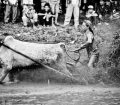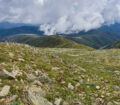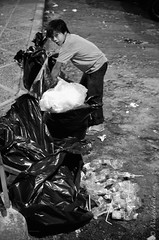I’m not sure if I’ve ever been sea-sick before. I’ve been dizzy on a boat; nauseous on land after boating (though it may have been all the beers); and sick while on a boat (during a very memorable overnight ferry ride in Tanzania). Basically every combination of sickness and seas, but never sea-sick. So I was a bit worried when my first night on the ship, I got sick. And we hadn’t even left port. So I decided it must have been from something I ate in Morocco, and hoped that I’d continue to avoid seasickness over the coming weeks at sea.
So, you may appreciate some context: I am visiting Jenn, the Director (aka Principal) of Class Afloat, a high-school based on a tall-ship which sails to over a dozen different countries each year. I have joined this floating community for a few weeks to sail down the west coast of Africa, stopping in Morocco, the Canary Islands, and Senegal. The whole crew of 73 people, mostly 16-18 year old students, have fit me cozily into this tightly-knit community where I have taken hundreds of photos for the schools’ marketing; helped teach classes; learned about sailing and maritime traditions; cooked and cleaned; and formed wonderful new friendships with so many lovely fascinating people.
During one of my first nights at sea, we shared one particularly interesting ritual called “seeds and stones”. Every person found a stone during their time in port, and was given a seed from the defunct ship garden (which has some hope of a resurrection this year!). In the stone you imbue some particular quality or personal issue you wish to be rid of (i.e. to “sink”). And in the seed you imbue that quality with which you wish to grow inside you. The bosun Peter combined it with the tradition celebrating sailors working off their wage advance (the so-called ‘dead horse’) and being debt-free, usually a month into their voyage. To everyone’s delight, Peter actually constructed a paper-maché horse for us to place our stones and seeds within. Then we all assembled on deck in the dark of night and sang the “Dead Horse” sea-shanty together, with the chorus “Pooooor oooold hoooorse!”, as Peter cast the horse overboard.
Old Technology
I expected that my manager Brian, who’s an avid sailer, may be jealous or excited that I’ll be sailing on a fully-rigged tall-ship. Instead he reacted with, “Nah. That’s old technology. Sailing has come a long way since then.”
A few weeks later aboard the Sørlandet I was hauling on yard bracing lines with students, coiling and hanging ropes, and thinking about this. As a late-comer to the world of sailing, it dawned on me that sailboats must be one of the oldest technologies still widely used. I’m only just starting to discover how richly diverse is the history and culture of sailing, so most of the brilliant innovations in sailing technology are lost on a newbie like me.
But I can appreciate some of the great design features in other areas of the ship: features that if adapted to everyday life would mean people utilise their living spaces smarter and more efficiently. In the banjer (the common area where students eat, study, sleep, and lounge), wooden chests with cushion tops can have their lids folded up into seat backs for classes, left down for more sitting space, or opened completely revealing beds with storage. Many students sleep in hammocks, which are a dream in rough seas when those in bunks cannot stop rolling around (sometimes to the point of seasickness). Amazingly in a hammock you cannot even feel the ship rocking — the only way to tell is by looking at the ceiling tilting back and forth, which made my head spin until I just closed my eyes. Tables extend and have additional pieces bridging between them, for extra desk space in class. Doors (including fridge doors) have hooks to hold them in open or closed, and drawers locked closed because they drop into a slot. Non-skid rubber mats keeping anything on a flat surface from sliding around. Every bench seat is a storage chest, and hooks are everywhere. I definitely gained a new appreciation for the brilliance of ship carpenters.
For Dramatic Effect
Any normal high school comes with challenges of study, friendships, and adolescence. Sailing a tallship through unpredictable weather, between dozens of ports in developing countries is no small feat either. And living in any small (just 65 meters of ship), self-reliant, enclosed community is full of dramas of relationships, egos, and illness. You cannot imagine the perfect storm created by combining these three situations — and the endless challenges that Jenn with the rest of the crew must confront and conquer daily.
But what all this creates is an amazing, transformative, character-building (and possibly even addictive) experience for everyone. The love within the community is palpable. There are daily ‘moments of awesome’; water bucket attacks on birthdays; dolphins surfing the ship’s wake and activating bioluminescence; beautiful sunrise and sunsets; guitar jams and singing; amazing teamwork and cooperation to cook, clean, sail, and educate; daily hug targets; and excited, worldly students broadening their horizons, learning through experience, and discovering what this world has to offer them, and them it.

As the ship’s photographer and photography lecturer, you better believe I got some sweet shots! Check them out.
-Mike Afloat
P.S.
And they say so. And they hope so!
And when he dies then we’ll tan his hide,
Oh poor old horse.
P.P.S.
Straight floatin’ on a boat on the deep blue sea
Busting five knots, wind whipping out my coat
You can’t stop me …., ’cause I’m on a boat



























